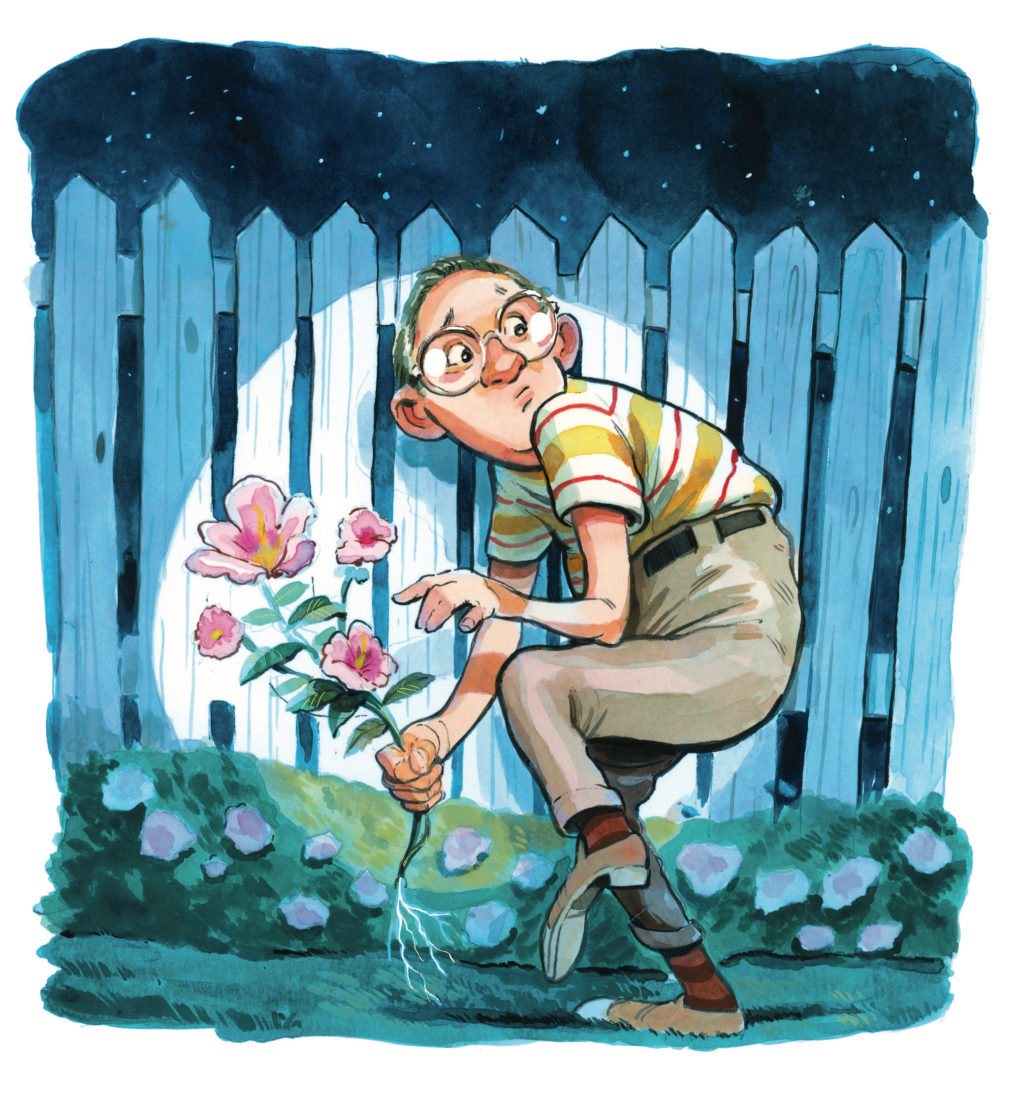Q: We plant a street-side flank of the yard for show, but, come the crocuses and tulips, thieves descend. How do we deter them?
Crazy, no? Most folks would find it abhorrent to stroll through a park, grubbing at the beauty. But somehow bounty in a (perceived) less observed circumstance causes people to unleash their inner bio-miscreant and have at you, hammer and tong. After bandits boosted a beloved azalea overnight—yes, the whole thing—a friend of mine buried bricks in a sunburst pattern around those left, attaching the bricks to the trunks with thirty-pound-test fishing line that he also buried, on the theory it’d cost thieves too much time to figure out in the heat of a nighttime heist. Your defensive modus operandi lies instead in what mathematicians call chaos theory. In your perpetrators’ view, what you have “on offer,” crocuses and tulips, is popular. Ergo: Move that offer outside their ken into a chaos of plants that will flummox. Group nothing, and decrease the reachability of your high growers by putting them toward the back. As a base, Virginia bluebells self-seed and are unstoppable. Of the taller varietials, hellebore, also known as the Lenten rose, is a buttercup family member, but it’s a kick-ass buttercup: All parts of it are poisonous to the touch. You should post that information along the frontage to prevent innocents from getting a rash. With its white blooms, bloodroot will be a bright herbaceous pick for your new meadow. Lastly, try the graceful Balkan anemone as a low-growing perennial. Now, is this a silver bullet? No. Will you still suffer losses? Possibly, but you’ll have more fun, and the perps may have hell to pay if they try to take your hellebore.
Q: What the heck is a roan horse?
There are three main types of roans: blue, red, and bay, though the bay roan can read red. A roan has an intermingling of white hairs in its base coat color; the coat pattern is genetically determined, requiring just one roan parent. A sorrel, or chestnut, horse will produce the “red” roan; a black horse, the “blue” roan; and a dark bay horse, the “bay” roan. Often seen in quarter horses, cutting horses, paints, and Appaloosas, roaning may be hard to spot in the last two, as their abstract coloration can seem roan-y, even if the gene is absent. The roaning of any horse is generally prized because it creates such a dramatic look, giving the animal a lovely silver sheen that doesn’t extend to the head and legs—it only graces the body, hints and dapples of illumination.
Q: Why did Hank Sr. call Hank Jr. “Bocephus”?
It’s hard to find a better Southern nickname than Bocephus. In Hank Williams Sr.’s usage, it hails from the Grand Ole Opry, where the old-school, aw-shucks ventriloquist-comedian back in Hank’s day, Rod Brasfield, called his dummy “Bocephus.” Naturally, in Brasfield’s elocution and in the twangy Alabama-ese of Hank Sr., the e would be elongated heavily, as in: Bo-ceeeee-fus. At once neoclassical and drawly, it makes a perfect Southern moniker. The question has always been where Brasfield got it. In the debate, some think it comes from Alexander’s great war steed, Bucephalus, meaning “ox-headed” or “strong-willed” and “mettlesome,” which has come to mean any spirited horse. Despite Southerners’ love of all things classical, it’s considered a stretch from Alexander to Brasfield in the Opry. A more organic origin lies in the latinized Aramaic etymology: Cephas (“stone”) translates as “Petros” in Greek, or “Peter” in English. The name enjoys wide usage across Catholic Europe, as in the name of the cathedral of the Holy See. The French would have brought the name to Mobile and New Orleans. “Bo” is the anglicized Southern version of the French Gulf Coast’s “Beau.” Best theory, then: Beau Cephas, or Bocephus, refers to “Good Peter,” the apostle. Some say that in Cajun French the appellation has come to mean any boon companion. Which would fit Hank Sr.’s love for Hank Jr. to a tee.








